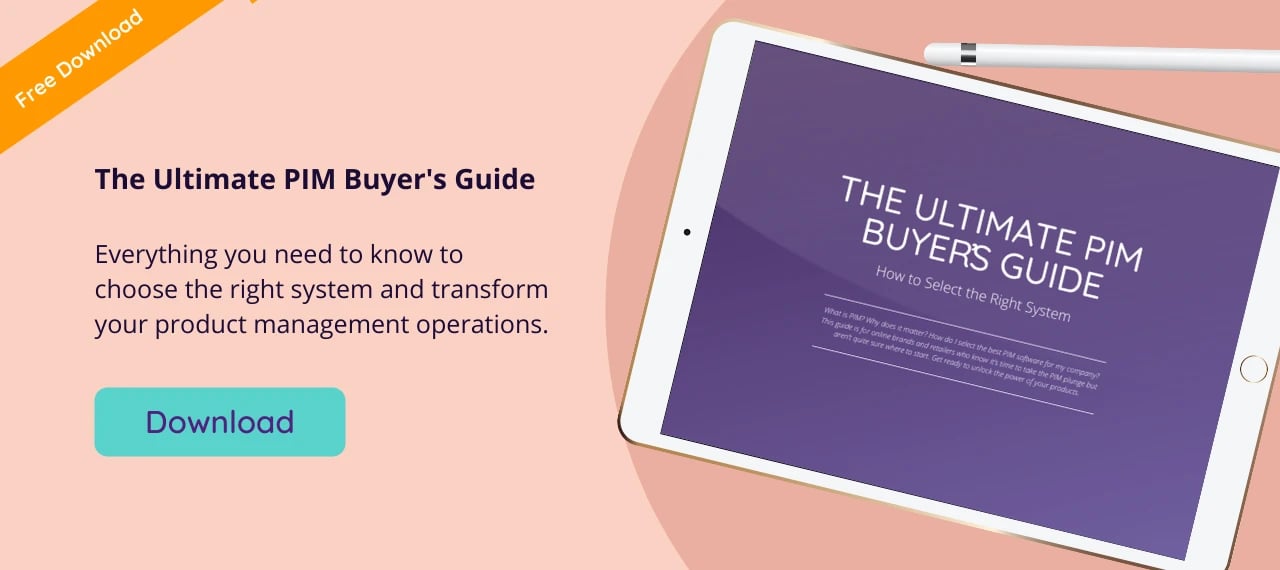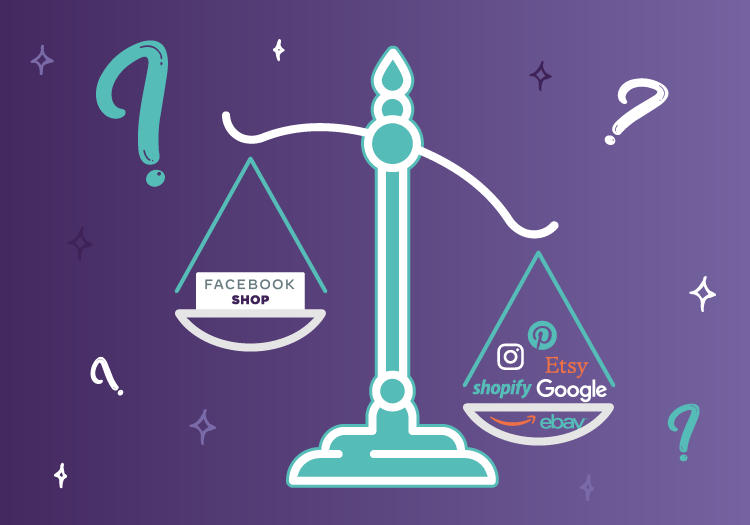If there’s any industry that is just made for marketing in the digital age, it’s the sports and outdoors industry.
Think about it. Digital marketing is all about being online, engaging with customers and fans, using optimized websites and social media. And what industry lends itself better to such highly visual sales and marketing channels than sports and outdoors, where every activity is a chance to create an engaging visual to use to market your products?
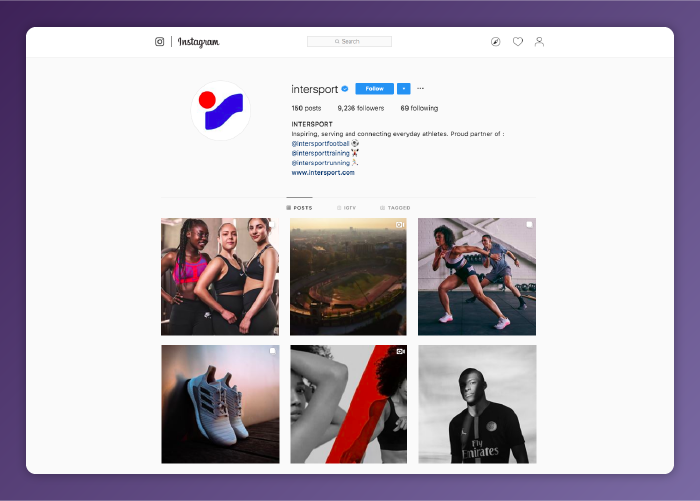
Sports and outdoors brands have a huge advantage in the modern digital marketing landscape: They’re highly visual. Photos, videos, and other digital marketing tactics sell, and in sports brand marketing, there’s a ton of opportunity to lean into the digital marketing tactics that are helping brands succeed as society shifts more and more toward living and shopping online.
But even though sports and outdoors brands are well-positioned to take advantage of digital marketing trends, it’s still no walk in the park to build a brand and market it effectively in such a fast-changing digital landscape. If you’ve got questions about sports brand marketing in the digital age, you are not alone.
So if you’re looking for the best tips for sports brand marketing that will drive sales in the omnichannel landscape of 2019, look no further. Read on to learn why you should make the transition to digital marketing ASAP, how to build your digital brand, and the best tactics for sports brand marketing in 2019 and beyond.
Sports Brand Marketing: Making the Transition From Traditional Marketing to Digital
Traditional forms of marketing, like print, TV, and radio ads, were once cutting edge. But in the digital age, more and more retailers are moving away from traditional marketing, instead investing their marketing budgets into digital strategies.
Industries that once relied on advertising on TV, in newspapers, on the radio, and in magazines are now redirecting that money toward things like paid search, email campaigns, and social media ads. This is the year that U.S. marketing spending in digital channels is projected to overtake spending for traditional marketing, and in future years, digital spending should only increase while traditional marketing spending continues to decline. That means that from here on out, retailers are expected to spend more money nationwide on digital marketing than they do on traditional marketing. We’re truly at a turning point in the history of product marketing.
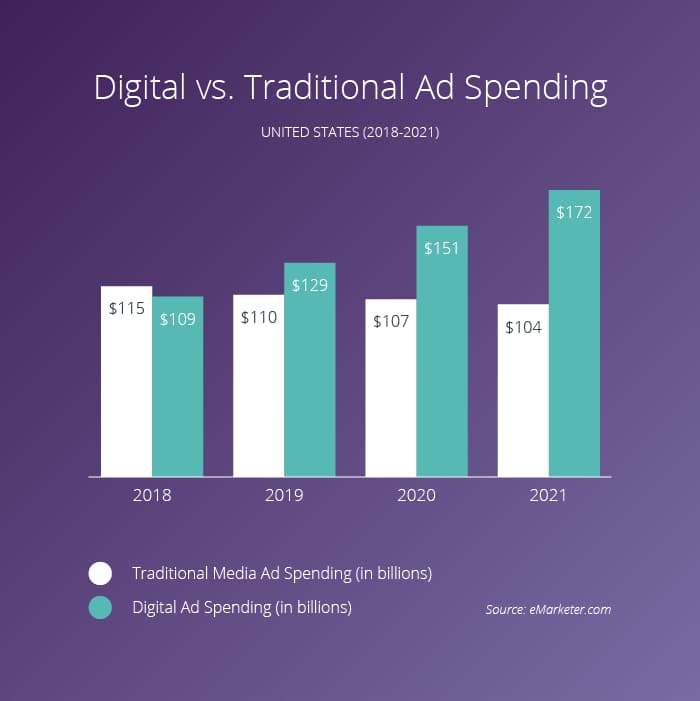
In the sports and outdoors industry, one interesting trend has been the success of digital marketing strategies that allow customers to interact with their favorite brands.
Take REI’s mobile app strategy for example. In addition to having a store app that customers can use to shop REI from their mobile devices (something most major retailers have at this point), REI has also created apps for trail running, exploring national parks, and hiking.
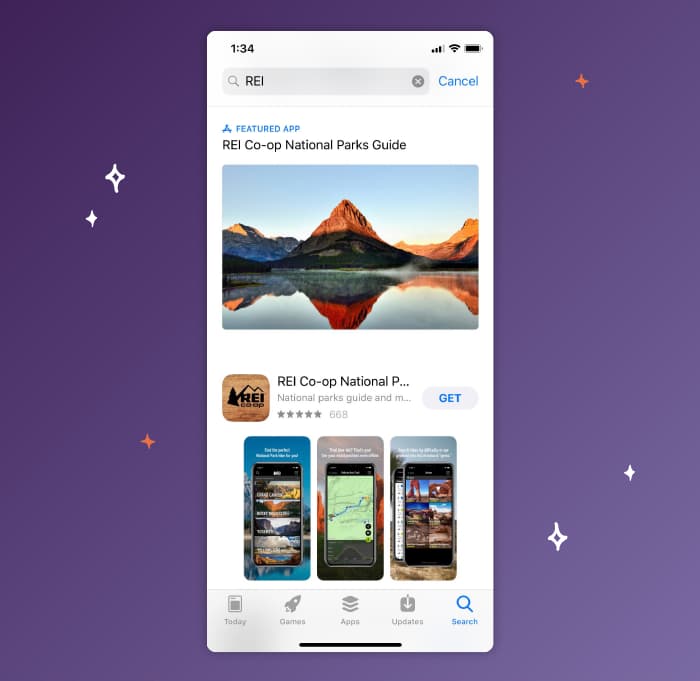
This allows REI’s target market—the kind of people who like to trail run, explore national parks, and hike—to download REI-branded apps related to their interests, so even when they’re not actively shopping, they’re engaging with the REI brand. It’s kind of genius.
REI is a perfect example of the type of digital marketing that’s working for companies in the sports and outdoors industry. Customers in this industry want strong, relatable brands that they can engage with online.
Sports Brand Marketing Tactics that Are Working in the Digital Age
With that in mind, here are some of the tactics you might consider to market your own sports or outdoors brand in the omnichannel world of 2019.
Build a Strong Brand that Customers Relate To
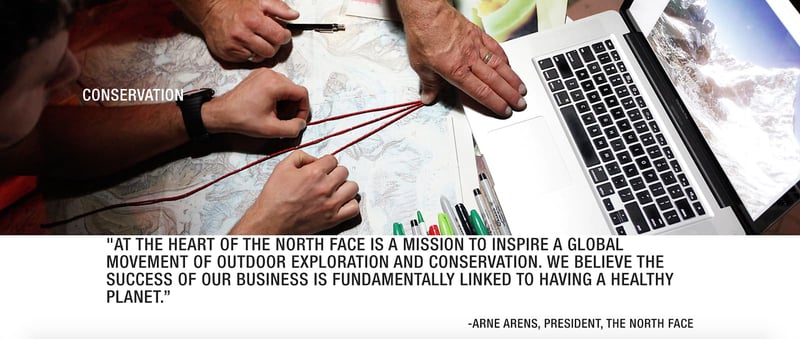
This is one of the things REI is doing right. Brands like REI, The North Face, Under Armor, and Nike all have instantly recognizable, instantly relatable brands. Whether you’re an avid customer or a passive observer, The North Face brings to mind exploration and conservation, while Under Armor makes you think of strength and determination.
The first step for any sports brand that wants to succeed in digital marketing is to decide who you are, what you stand for, and how you will communicate that to your audience via digital channels.
Optimize for Mobile Shoppers
As more and more people own mobile smart devices, and more and more ecommerce happens on mobile devices rather than desktop ones, it’s imperative that you optimize your website for mobile users. That means having a website that works just as seamlessly on tablets and phones as it does on a laptop.
Utilize the Power of SEO
If you want to increase sales, you need to get more people to your sales channels. That means search engine optimizing everything, from content on your website to product descriptions on Amazon and other third-party sales platforms.
This has a ton of power. If you optimize for the right keywords, it’ll help many new potential buyers find your products instead of your competitors,’ whether that’s via a great blog or white page on your website, or the perfect mix of keywords in your Amazon description.
Lean Into Video Content
Video is emerging as one of the most powerful ways for retailers to reach new customers. Research shows that members of Gen Z stream as much as 23 hours of online video per week—more than any previous generation ever. If you want to reach Gen Z, you’re going to have to do it through video.
Sports brands are already demonstrating how effective it can be to create viral video content as part of your overall marketing strategy. Nike has created videos tied to major current events in sports—most recently the Women’s World Cup—that have spread like wildfire on social media.
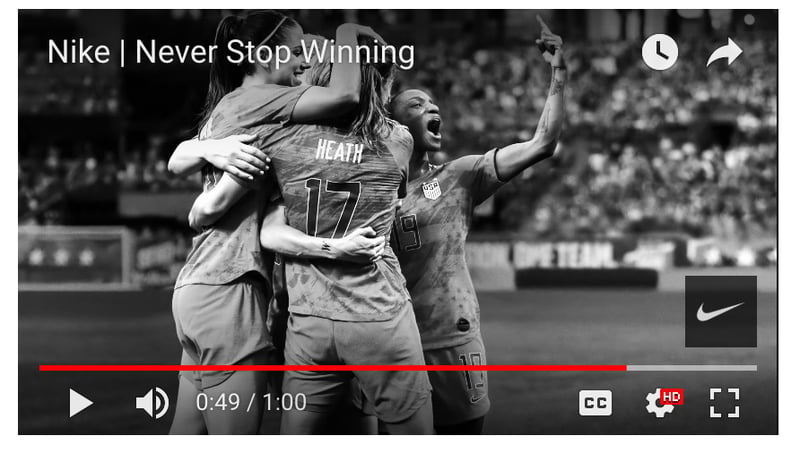
Creating original video content that’s high-quality and shareable is proving to be a powerful way to reach customers online.
Get Your Customers Involved
User-generated content is a great digital marketing strategy for many industries, but it works extremely well for sports and outdoors brands because, by nature, customers interact and do cool things with the products.
Activewear brand Gymshark is just one company that’s leaning hard into this strategy, using hashtags to generate user content that it then repurposes on its own social channels.

Many people love seeing their content featured like this, so a similar strategy could help increase engagement and reach for your own brand.
Turn Celeb or Influencer Followings Into Your Own
Sports brand marketing has long included sponsoring elite athletes. But in the age of social media influencers, it’s easier than ever for smaller brands to leverage fan followings to build their customer base.
Let’s look again at Gymshark, which reached out to a number of athletes who had growing social media followings to offer them free products, hoping that those athletes (who included high-profile bodybuilders Lex Griffin and Nikki Blackketter) would share their Gymshark products on their social feeds.

It worked, and now Gymshark sponsors a number of athletes who are active on social media, advertising to their millions of combined followers through regular sponsored posts.
Don’t Be Afraid of Email Marketing, Marketing Automation, and Other Modern Tools
Email may seem a little old fashioned in the age of social media and instant, constantly updating communication, but it’s still an effective way for businesses to reach their target markets and past customers, keeping them updated about company news, new products, and more. Curating an email list is no small feat, but it’s worth the work—email marketing comes with a potential ROI of 4400 percent.
Marketing automation is a great way to cut down on the time investment it takes to implement many of these strategies. And automation is just one feature that comes with a great product information management (PIM) solution.
In fact, in today’s omnichannel marketing and sales landscape, no commerce business should be without PIM software. A good PIM will centralize your product data, optimize marketing efforts and metrics, distribute product catalogs and information to as many channels as you use, and analyze data so you can constantly better your sales and marketing efforts and keep increasing your bottom line. Companies like Intersport have seen 80 percent growth in online sales and 500 percent increase in page views in some channels after implementing PIM software. Will your company be next?
Sports and outdoors companies of any size should consider all the PIM options out there before committing to a system, and that’s where our Ultimate PIM Buyer’s Guide should come in handy. Take a look and get ready for PIM to increase your sales, page views, and bottom line.
Frequently Asked Questions
Transitioning from traditional to digital marketing requires a strategic realignment of your brand's marketing initiatives to cater to an online audience. Here's how sports brands can make this shift:
-
Evaluate Your Online Presence: Begin with a comprehensive audit of your website, social media, SEO, and e-commerce capabilities to understand where you stand in the digital space.
-
Redefine Your Budget: Reallocate your marketing budget by investing more in digital channels, such as paid search, social media advertising, and influencer partnerships, to reflect changing consumer behaviors.
-
Content Strategy Overhaul: Develop a content strategy that utilizes the visual appeal of sports and outdoor activities to create engaging, shareable content across digital platforms.
-
Skill Development: Ensure your marketing team is equipped with digital marketing skills, including content creation, data analysis, SEO, and social media strategy.
Effective digital marketing tactics for engaging with sports and outdoor enthusiasts include:
-
Mobile Optimization: As shopping and browsing increasingly shift to mobile, ensure your website and content are optimized for a seamless mobile experience.
-
Leverage Video Content: Utilize video content to capture the excitement and energy of sports, tapping into the viewing habits of your target audience, particularly Gen Z, who consume a vast amount of video online.
-
SEO for Visibility: Apply SEO best practices to improve the visibility of your products and content in search results, attracting more traffic to your website and online stores.
-
Encourage Participation: Use campaigns to encourage user-generated content, creating a sense of community and making customers part of your brand story.
-
Collaborate with Influencers: Partner with athletes and influencers who embody your brand's values and have a significant following, to expand your reach and credibility.
By focusing on these strategies, sports brands can cultivate a strong digital presence, foster customer loyalty, and drive sales growth in an omnichannel retail environment.


